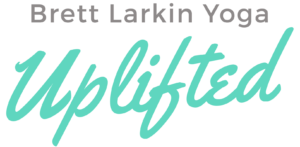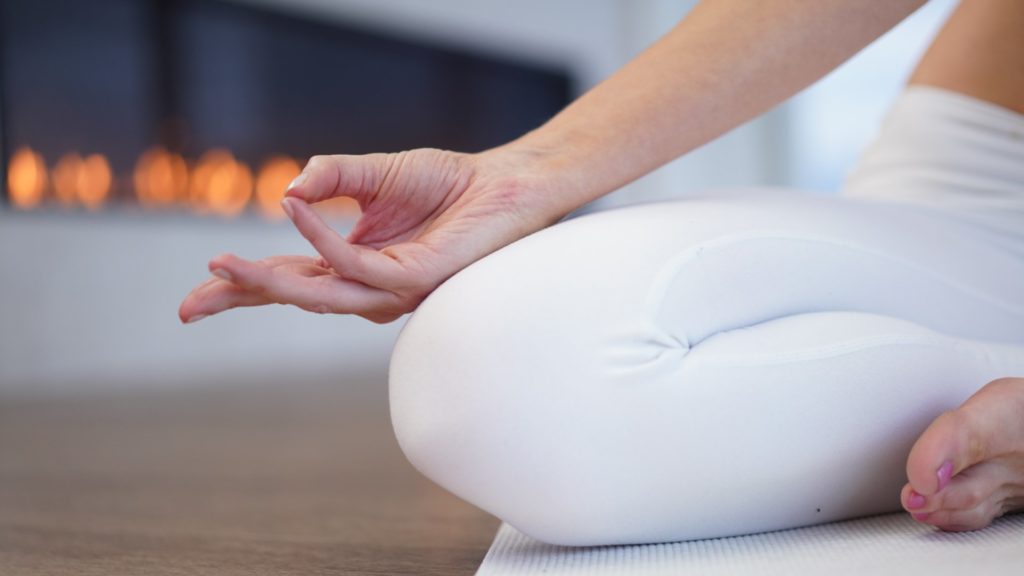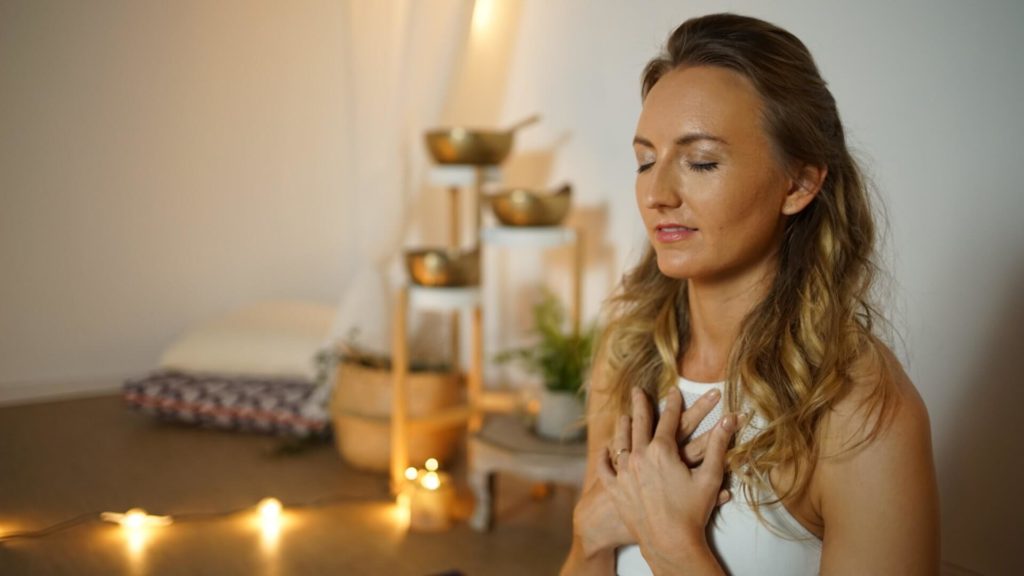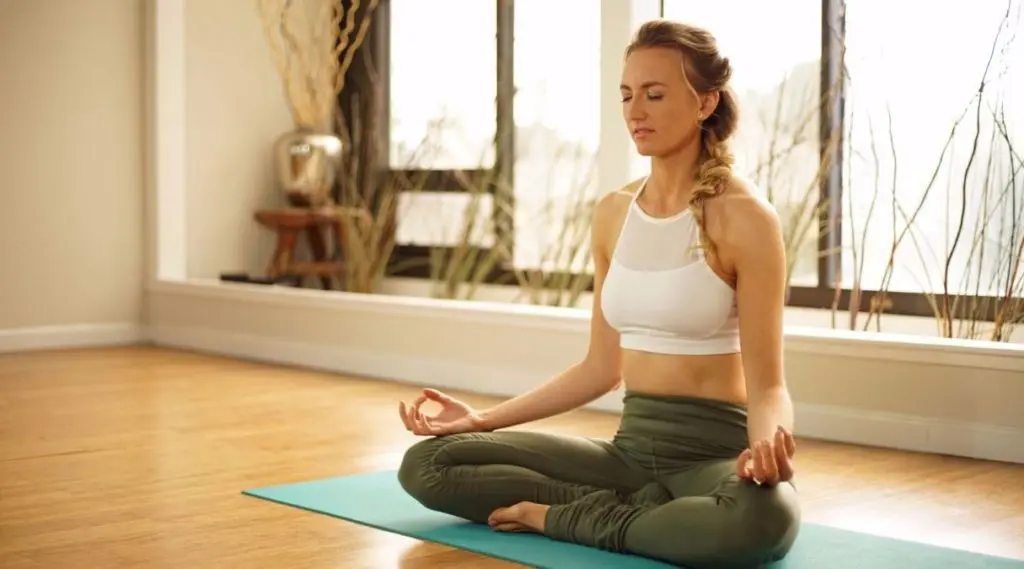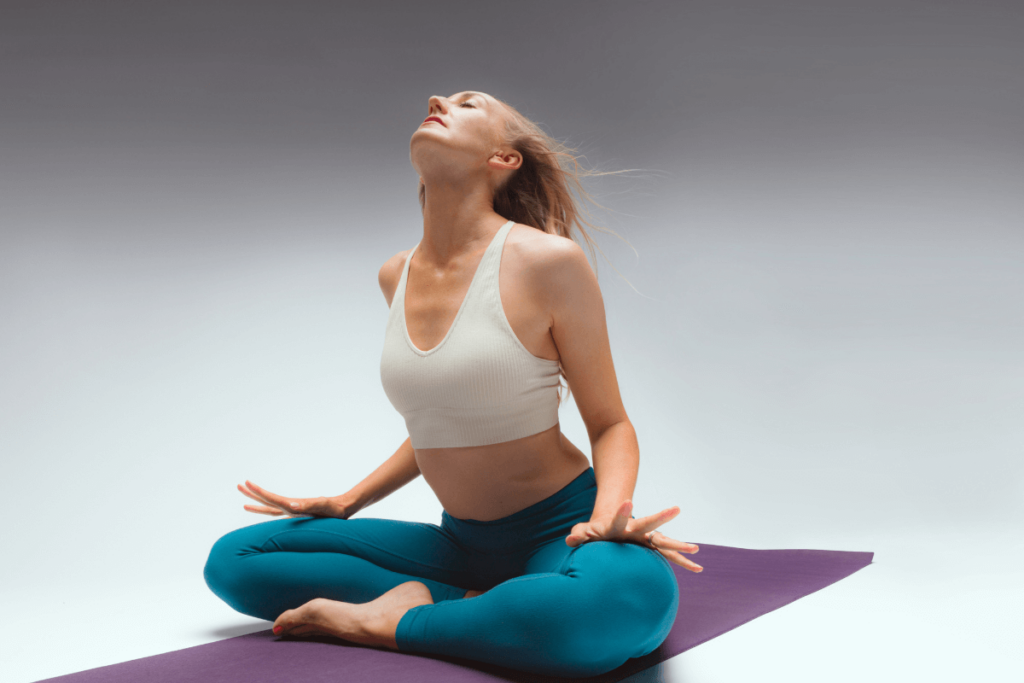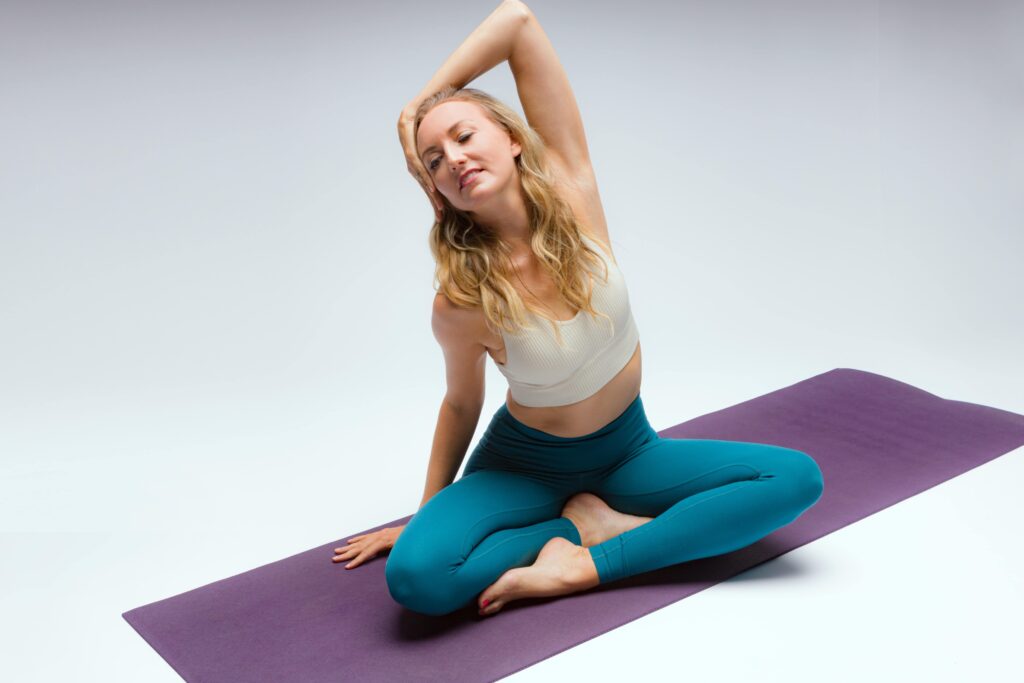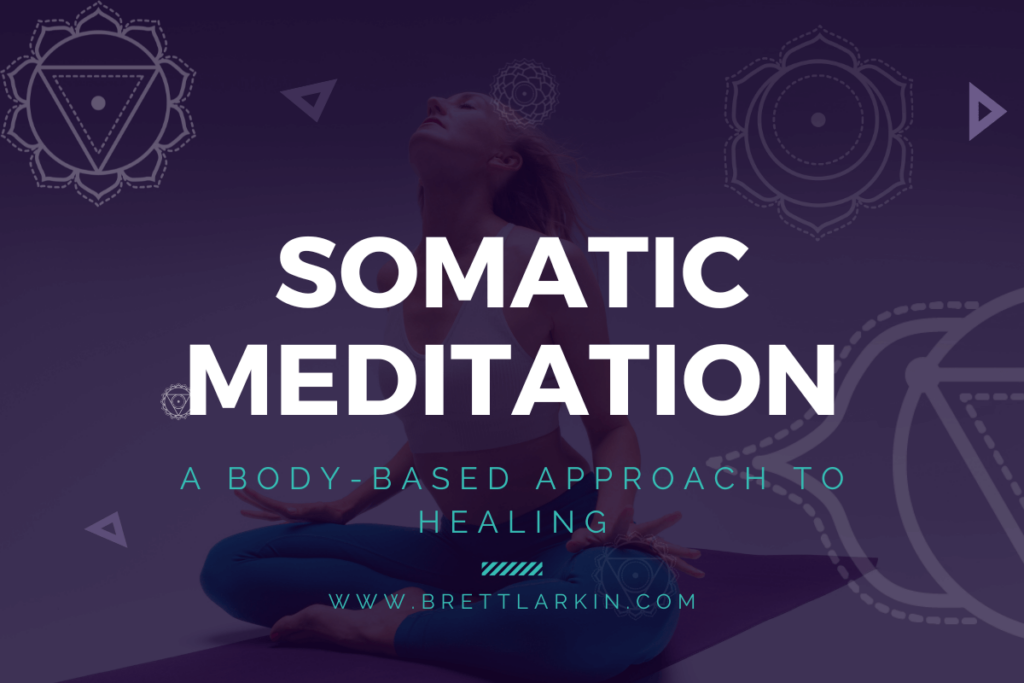
Have you ever tried to meditate and it just didn’t work?
If traditional meditation has ever left you feeling more frustrated than relaxed—you’re not alone.
For many people, especially those with high stress, chronic pain, trauma, or a racing mind, sitting still and “clearing your thoughts” can feel impossible.
That’s where somatic meditation comes in.
This body-based approach offers a gentler, more grounded way to access the benefits of mindfulness by starting in the body, not the mind. When the body relaxes, so can the mind.
Whether you’re looking for relief from anxiety, a deeper connection with yourself, or a practice that actually feels doable in your daily life, somatic meditation invites you to slow down, tune in, and listen to your inner world.
Let’s explore what it really is—and why it might be exactly what your nervous system has been craving.
What Is Somatic Meditation?
Somatic meditation is a body focused approach—a mindfulness practice that focuses on physical sensations, feeling with a deeper awareness, and being present in the body with a conscious mind, rather than trying to control or clear the mind.
Unlike traditional meditation techniques that emphasize mental focus or breath control, somatic meditation begins with embodied awareness—tuning into sensations, emotions, and the subtle rhythms of the nervous system.
Somatic meditation is about coming home to yourself. It’s a meditation practice of radical self-trust, where the body becomes the gateway to healing, intuition, and inner calm.
With the somatic approach, by gently shifting your attention inward and allowing what’s present to unfold—without judgment—you begin to rewire your stress response, access deeper states of rest, and reconnect with your most grounded, authentic self.
This somatic practice lets you step into your meditative consciousness and tap into your somatic intuition in a body centered, fully present way. I like to think of this as a bottom up process, where your somatic meditation practice comes from a soothed nervous system and a relaxed body, so you can go up and connect with a greater sense of the divine.
Take my feminine energy quiz to get a recommended practice for balancing YOUR feminine energy 👇
Principles of the Somatic Approach
At the core of the somatic approach is the practice of interoception—the ability to sense and feel internal bodily experiences.
Rather than observing from a distance, somatic practices, like somatic meditation, invite you to be in your body, noticing sensations like warmth, tension, tingling, or spaciousness without trying to change them.
This deep listening creates a foundation of awareness that allows emotions, memories, and stress patterns stored in the body to gently surface and resolve.
In somatic meditation, this might look like resting your attention on the sensation of your heartbeat, noticing where you feel tightness in your chest, or simply allowing a wave of emotion to move through you with compassion and curiosity.
Movement and sensation play a vital role in somatic meditation. Even small micro-movements—like swaying, rocking, or shifting your weight—can support nervous system regulation and help discharge stress.
This is where the concept of embodiment comes in: rather than thinking about your body, you begin to live from within it. Embodiment means a felt sense of being present to your lived, moment-to-moment experience—noticing what’s real and true in the now. In somatic meditation, and somatic experience, these principles show up as pausing to feel your feet on the floor, breathing into the back of your ribs, or following a subtle impulse to stretch or sigh. You practice by listening to your body with deep awareness and focus on any sense of tension with mindfulness. Every sensation becomes a doorway to more body awareness, presence, and healing.
Experience My Somatic Yoga Workshop (usually $67) FREE!👇
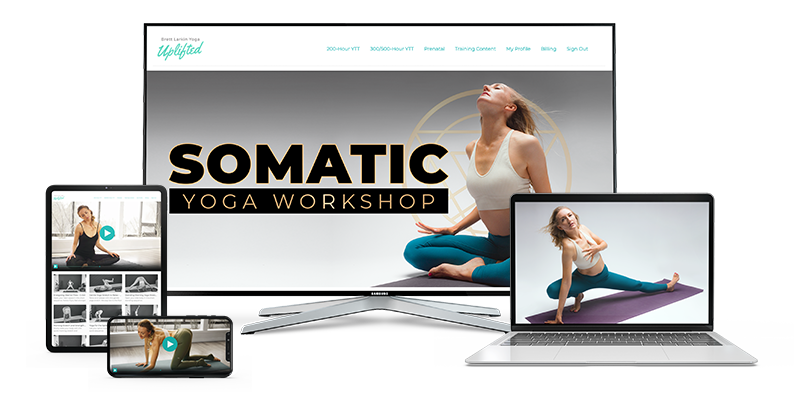
Benefits Of A Somatic Meditation Practice
Somatic meditation offers a powerful pathway to nervous system regulation, emotional resilience, pain relief, and embodied self-awareness.
By gradually bringing attention to internal sensations and gently shifting out of chronic basic stress states, this practice can reduce anxiety, support trauma recovery, and enhance overall well-being in your physical body and mental emotions.
Research shows that body-based mindfulness practices can lower cortisol levels, improve emotional regulation, and reduce symptoms of PTSD and depression.
Whether practiced sitting, lying down, or with gentle movement, somatic meditation creates space for healing and awakening that’s deeply personal and profoundly physiological.
Benefits of Somatic Meditation:
- Reduces anxiety by calming the nervous system through physical body awareness
- Supports trauma healing by creating a sense of safety in the body from the top down
- Improves emotional regulation by increasing interoceptive awareness and helping you realize what you really feel
- Enhances self-trust and intuition by deepening connection to bodily cues, especially through the breath
- Decreases cortisol and stress hormones through parasympathetic activation helping you to ground and relax, while you regulate your nervous system
- Promotes better sleep and relaxation by releasing muscular tension and helping you develop an unmediated experience of slipping into parasympathetic mode in your body
- Increases resilience and presence in everyday life by building embodied mindfulness with a self existing wakefulness
- Helps process stuck emotions gently in the mind through meditation, without needing to relive the story or carry the story forward in your life. You’re able to release and regulate from a place of stillness and with trusted techniques.
How To Practice Somatic Meditation
Somatic meditation is less about doing and more about noticing.
To begin, choose a quiet space where you feel safe and undisturbed.
The following practices are simple, accessible ways to drop into your body and begin building awareness from the inside out.
You can explore them seated, lying down, or even during slow movement. You can be in bed or on the yoga mat. Meditate in the way that feels best for you in your life, where you can feel safe and release.
Let your experience guide the pace—there’s no rush in somatic work.
Begin with Grounding
Feel the contact between your body and the earth—your feet on the floor, your back against a chair, or your body supported by a mat. Let gravity hold you.
Sense Into the Body
Close your eyes and gently scan your body. Notice any areas of warmth, tension, tingling, or numbness without judgment. Stay curious. Let your brain and mental focus take the backseat and you gradually process sensations in the body.
Follow the Breath Without Controlling It
Observe your natural breathing as it moves in and out. Feel it in your belly, ribs, or nose. Let it anchor you to the present moment.
Allow Movement or Stay Still
If you feel the impulse to stretch, rock, sway, or shift—follow it slowly. If your body prefers stillness, honor that too. You have the ability to know what you need on your journey, from basic movements to a release. Ask for guidance when you need it.
Track Sensations and Emotions
If an emotion or memory arises, notice where it lives in the body. Try to feel, instead of letting the brain lead. Breathe into it gently and stay with the sensation without needing to “figure it out.”
Close with Integration
Before ending, take a few breaths to notice how you feel now compared to when you began. You might place a hand on your heart or say a few kind words to yourself. Express gratitude to yourself and the world for this opportunity to meditate and process.
Somatic vs Traditional Meditation
Traditional meditation often emphasizes mental focus—such as concentrating on breathing, repeating a mantra, or observing thoughts as they pass.
While these techniques can be deeply beneficial, they may feel inaccessible for people with trauma histories, high anxiety, or difficulty sitting still. Traditional styles often prioritize stillness and cognitive detachment, which can sometimes bypass the body’s messages or unintentionally reinforce disconnection from physical sensations.
Somatic meditation, on the other hand, starts with embodiment. It prioritizes feeling over thinking, and sensation over structure.
Rather than trying to control the mind, somatic meditation invites awareness into the body—welcoming physical sensations, emotions, and impulses as part of the practice.
This approach is especially supportive for those who need a gentler, more trauma-informed path to mindfulness. It’s less about achieving a “blank mind” and more about building a compassionate relationship with your inner experience, exactly as it is. An awakening is the bonus as you develop the ability to relax and release.
Recommended Resources
Want to go deeper into somatic meditation and embodied awareness?
Here are some excellent starting points and recommended reading and viewing:
- Somatics: Reawakening The Mind’s Control of Movement, Flexibility, and Health by Thomas Hanna – A classic resource introducing the principles behind somatic awareness and movement.
- Somatic Meditation for Deep Healing – A guided practice to help you drop into the body and release tension.
- Somatic Yoga for Anxiety & Stress Relief – A calming, beginner-friendly sequence guided by Brett.
Next Steps
If you’re ready to explore the deeper layers of your being, somatic yoga offers a doorway to not only physical health but also emotional freedom and self-discovery.
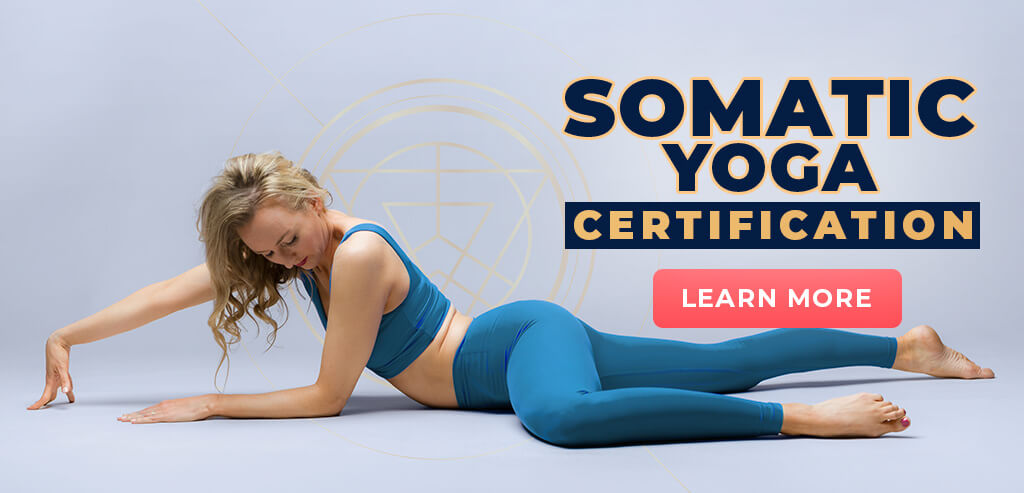
FREE Embodied Yoga Workshop (usually $67) Somatic Techniques & Cord Cutting Ritual

If you want to go even deeper, I invite you to join my Somatic Yoga Training Certification. This comprehensive training will equip you with practical tools and insights to enhance your practice and effectively guide others on their somatic yoga journey.
YOU MIGHT ALSO LIKE
- Somatic Yoga for Cortisol Detox: A Gentle Path to Stress Relief and Nervous System Healing
- Gentle Somatic Yoga: Heal Chronic Pain, Release Trauma, and Reclaim Your Bod
- Somatic Meditation: A Body-Based Approach to Healing Stress, Anxiety, and Trauma
- Advanced Pelvic Floor Breathing: A Somatic Approach to Healing
- Somatic Yoga For Yoga Teachers: Everything You Need to Know in 10 Steps
- How Somatic Shaking Can Release Tension and Reset Your Nervous System
- Discover Somatic Pilates: Enhance Your Body Awareness and Flexibility
- Kundalini for Feminine Energy: Ignite Your Creative Power and Passion
- 6 Effective Somatic Yoga for Neck and Shoulders
- How to Teach Somatic Yoga: A Practical Guide for Instructors
- The Best Somatic Exercises for Grief: Find Healing Through Movement
- The Best Somatic Exercises for Anger Management and Emotional Release
- How to Teach Somatic Yoga to Beginners
- Best Somatic Yoga Poses for Emotional Release and Healing
- The Rich History of Somatic Yoga: From Origins to Modern Practices
